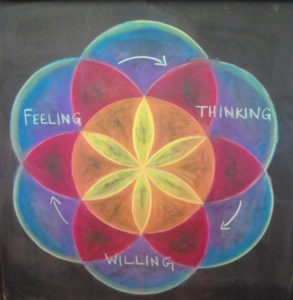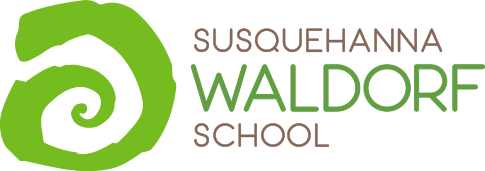
A “Waldorf Wellness” Blog Series to Help You Build Resilience
Right Now I Feel
How are you feeling right now? I mean this quite literally, if you closed your eyes for the next ten seconds and checked in and had to choose just ONE word from that inner-listening, what would it be?
Right now, I feel ________________.
It’s ok if you don’t quite know. It’s ok if the idea of narrowing down your complex emotional state to one word feels impossible. There is no “right way” to cope with the trauma, turmoil and anxieties of a crisis. What IS important is that we do SOMETHING to get our inner states to shift. And often this something can be a simple as a quick check in:
Right now, I feel________________.
In the midst of a crisis we can easily (and understandably) get caught up in a whirlwind of emotional overload. We are thinking about our stability on so many levels. We are thinking about the wellbeing of our families, the safety of our children, the health of our elders. We are thinking about things we have never had to actually think about like breathing, social distancing, meticulously disinfecting, quarantining, distance learning, staying in place. We may be thinking about those who are not thinking about these measures.
Humankind exists because of these thoughts/instincts about how to survive. Our Central Nervous System (CNS) is hard-wired with functions to ensure that when a threat is posed to our safety, protective factors come online quickly to defend our ability to stay safe. Our Sympathetic Nervous System (SNS) is one of these protective brain/body functions. When this system is activated, it prepares us to FIGHT or FLEE from dangerous situations or people. Our Parasympathetic Nervous System (PNS) might come online and tell us to FREEZE when we are totally overwhelmed by a situation that feels out of our control.
If you were able to answer the question: Right now I feel____________, what is the word that came up for you?
(Here is a brief list of feeling words if you need some inspiration: Exhausted, confused, silly, morose, helpless, optimistic, bored, frustrated, annoyed, inspired, motivated, distracted)
What’s the point?
I have found myself feeling “stuck” and “overwhelmed.” These are examples of a FREEZE survival response.
If you said “angry” or “irritated,” these are examples of a FIGHT response.
If you said “anxious” or “afraid,” these are examples of a FLEE response.
What I hope to offer you is the BIG EXHALE that all of this is normal and — in fact — these reactions to a crisis are the building blocks for our ability to cultivate RESILIENCE. If we can pluck JUST ONE feeling from the whole tornado of emotions that surface as we navigate this crisis, we have something to respond to with intention and compassion. We can get a little unstuck, we can soften our anger, we can calm our anxiety if even for just one moment.
When we turn a thought into a word we have more power to get out of instinctual/survival-mode. We can actually FREE UP a little room in our brains/minds (and therefore in our bodies and our spirits because it’s all connected) to help us move forward feeling a little calmer and a little more in control.
A Family/Community Wellness Practice
Try this “Right now I feel” exercise with your family members.
- Sit in a circle and each take a turn saying “Right now I feel_______”
- Then, each person can spend five or so minutes sharing/exploring why that feeling is there –
- Could this feeling be because you miss your friends at school?
- Do you think your feeling came up because grandma is sick?
- Or because of stress learning how to work and learn from home?
- After each person shares their “exploring why” a feeling has come up, go around the circle one more time.
- Each person shares again: “Right now I feel________”
- Has anything changed? Did a new word come up? Just pause to reflect quietly as a family or community.
- That’s it!
Sometimes moving forward in a hopeful way has nothing to do with doing a whole bunch of stuff! Simply working with ONE moment in time and ONE feeling can be really empowering and enlightening. Give it a try and let me know what you think!
I’ll offer some more “clearing” practices (including art therapy projects!) in this Waldorf Wellness blog post series so that we can continue to build resilience and connection, and inspire hope as individuals, families, and as a Waldorf Community.
With Warmth and Support,
Diane Richards, Development and Alumni Coordinator
Diane Richards is a former K-12 Visual Arts Teacher, a Trauma-Aware Yoga and Mindfulness teacher and is a graduate student studying psychotherapy at Widener University
